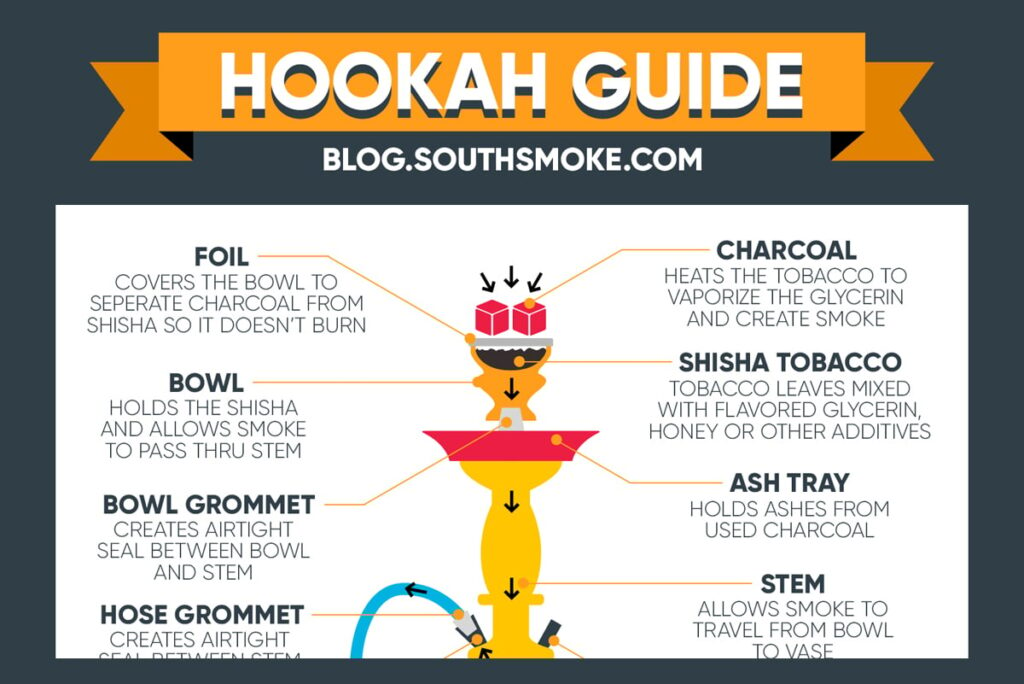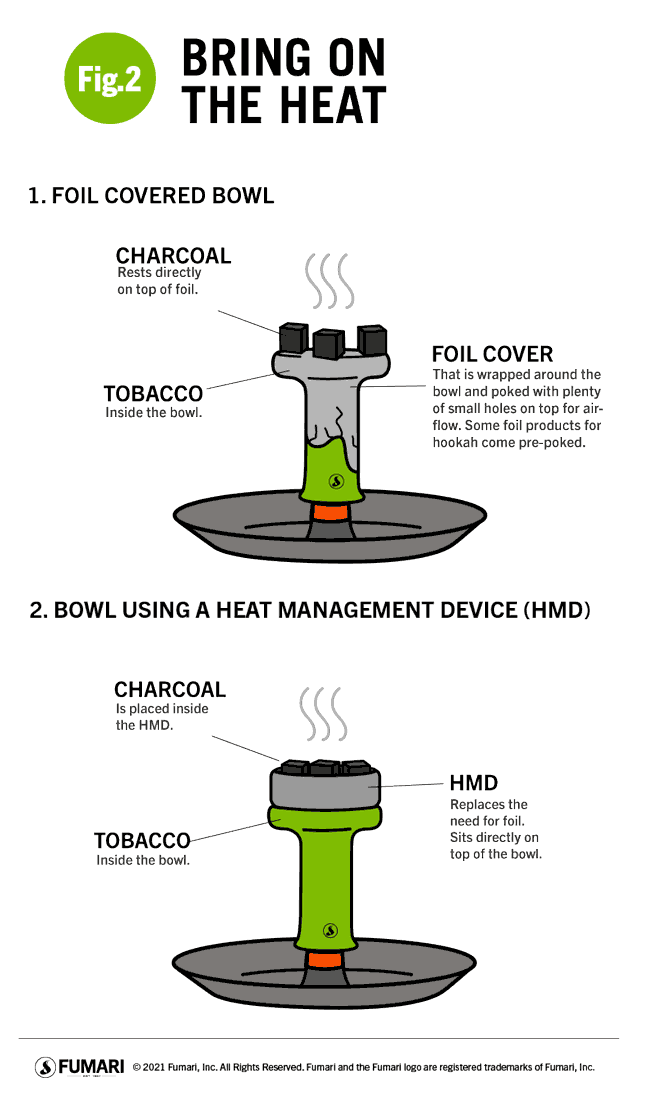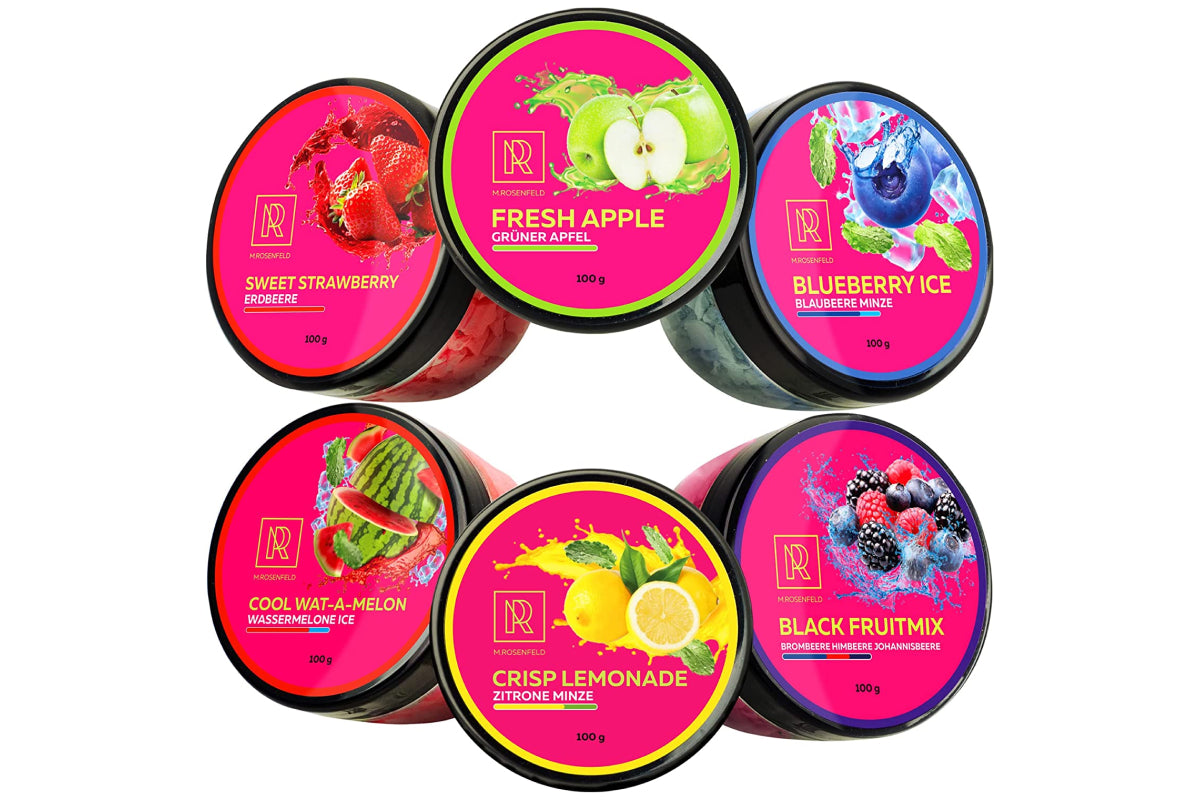Introduction

Hookah, also known as shisha or water pipe, has gained popularity in recent years as a social activity and a way to relax. It has a rich historical background, originating in ancient Persia and spreading to various cultures around the world. Understanding how a hookah works is important for newcomers to the scene. This comprehensive guide will delve into the anatomy of a hookah, the mechanics of smoking, different types of shisha and flavors, health and safety considerations, as well as debunking common myths. So, let’s dive into the fascinating world of hookah smoking!
Overview Of Hookah And Its Popularity
Hookah, also known as shisha or water pipe, has gained immense popularity in recent years. It has become a trendy social activity and a way for people to relax and enjoy themselves. Hookah lounges and bars are popping up in cities all over the world, attracting a diverse crowd of enthusiasts. The appeal of hookah lies in its communal nature, as it provides an opportunity for friends to gather and share a smoking session together. The variety of flavors and the unique experience of smoking through a water pipe have contributed to its growing popularity among individuals of different cultures and backgrounds.
Historical Background Of Hookah
The hookah has a rich historical background that dates back centuries. It is believed to have originated in the 16th century in India, where the use of water pipes became popular. Hookahs were often used by royalty and nobility as a symbol of luxury and leisure. Over time, the practice of smoking hookah spread to other parts of the world, including the Middle East, Persia, and the Ottoman Empire. Today, the hookah has become a global phenomenon, enjoyed by people of different cultures and backgrounds. Its long and fascinating history has contributed to its enduring popularity.
Anatomy Of A Hookah

The anatomy of a hookah consists of various components that work together to create the smoking experience. The main parts of a hookah include the bowl, the body, the downstem, the water base, the hose, and the mouthpiece. The bowl is where the tobacco or shisha is placed, and it is heated by charcoal. The smoke travels down the downstem into the water base, where it is cooled and filtered. From there, it travels up through the hose and is inhaled through the mouthpiece. Each part plays a crucial role in delivering a smooth and enjoyable smoking session.
Components Of A Hookah And Their Functions
The components of a hookah are designed to work together to provide a smooth and enjoyable smoking experience. Here are the main parts of a hookah and their functions:
- Bowl: This is where the tobacco or shisha is placed. The bowl holds the heat from the charcoal and allows the tobacco to vaporize, producing smoke.
- Body: The body of the hookah is the main structure that holds all the components together. It usually consists of a stem and a base.
- Downstem: The downstem connects the bowl to the water base. It allows the smoke to flow from the bowl down into the water to be filtered and cooled.
- Water Base: Also known as the “vase” or “bottle,” the water base holds water that helps cool down the smoke. It also acts as a filter, removing some impurities from the smoke.
- Hose: The hose is used to inhale the smoke. It connects to the body of the hookah and allows the smoke to pass from the water base to the mouthpiece.
- Mouthpiece: The mouthpiece is where the smoke is inhaled. It is attached to the end of the hose and provides a comfortable and hygienic way to enjoy the hookah.
Each of these components plays a crucial role in the overall function of the hookah, contributing to a pleasant smoking experience.
Understanding The Hookah Bowl And Hose
The hookah bowl and hose are essential components of a hookah that greatly contribute to the overall smoking experience.
The hookah bowl is where the tobacco or shisha is placed. It acts as a container for the tobacco and allows it to be heated by the charcoal. The design of the bowl ensures that the heat is evenly distributed, which helps in creating thick and flavorful smoke. Additionally, the bowl may have different shapes and sizes, catering to personal preferences and smoking styles.
On the other hand, the hose is the pathway through which the smoke travels from the hookah to the mouthpiece. It is typically made of flexible material, allowing for comfortable and smooth inhalation. The hose may have various designs and lengths, giving users the option to choose based on their comfort and aesthetic preferences.
Understanding the peculiarities and characteristics of the hookah bowl and hose can greatly enhance the smoking experience, making it more enjoyable and satisfying for hookah enthusiasts. So, when using a hookah, it is important to pay attention to these components and ensure they are clean and functioning properly.
The Mechanics Of Smoking

The mechanics of smoking a hookah involve the process of preparing a hookah session and understanding how charcoal and heat management affect the smoking experience. Before starting, the tobacco or shisha is placed in the hookah bowl, which is then heated by charcoal. As the smoker inhales through the hose, the smoke is pulled from the bowl, down the stem, and into the base where it is filtered through water. The cooled smoke then travels back up through the hose and is inhaled by the smoker. Proper charcoal and heat management can greatly impact the quality of the smoke and overall experience.
The Process Of Preparing A Hookah Session
To prepare a hookah session, start by filling the base with cold water. Next, screw the shaft onto the base and attach the hose to the designated port. Take the hookah bowl and pack it with your choice of shisha, ensuring that it is evenly distributed and not packed too tightly. Place a piece or two of charcoal on top of the foil or heat management device, allowing it to fully ignite. Once the charcoal is glowing red, carefully place it on the foil or heat management device. Wait a few minutes for the tobacco to heat up, and then start inhaling from the hose to enjoy a flavorful smoking experience.
How Charcoal And Heat Management Affect The Smoking Experience
Charcoal and heat management play a crucial role in the overall smoking experience of a hookah. The type and quality of charcoal used can significantly impact the flavor and smoke production. Proper heat management is essential to ensure that the shisha is evenly heated without burning, which can result in a harsh or unpleasant taste. It is important to monitor and adjust the heat throughout the session to maintain an optimal temperature. Additionally, using a heat management device can help regulate the heat and prevent the shisha from overheating, leading to a more enjoyable and flavorful smoking experience.
Shisha And Flavors

Shisha, also known as hookah tobacco, is a key component of the hookah smoking experience. It comes in various flavors and is made from a combination of tobacco, molasses, and flavoring agents. Shisha flavors range from traditional ones like apple and mint to more exotic options such as mango or blueberry. These flavors add an enjoyable and aromatic element to the smoke, enhancing the overall smoking experience. It’s important to choose high-quality shisha and experiment with different flavors to find the ones that suit your taste preferences and create a truly satisfying hookah session.
Different Types Of Shisha And Their Composition
Shisha, also known as hookah tobacco, comes in various types and compositions. The most common type of shisha is traditional tobacco-based shisha, which is made from a combination of tobacco leaves, molasses, and flavoring agents. There are also herbal shisha options available, which are made from dried fruits or herbs and do not contain any tobacco. These herbal shishas are a popular choice for those who want to enjoy the hookah experience without the nicotine content. Additionally, there are nicotine-free shisha options for those who want to avoid the addictive substance altogether.
Exploring Popular Hookah Flavors
When it comes to hookah, there is a wide variety of flavors to choose from, catering to different taste preferences. Popular hookah flavors include fruity options like apple, watermelon, and strawberry, which provide a refreshing and sweet experience. For those who enjoy a more exotic taste, flavors like mint, jasmine, and rose offer a unique and aromatic sensation. Additionally, there are dessert-inspired flavors such as chocolate, vanilla, and coconut, perfect for those with a sweet tooth. Whether you prefer something traditional or want to try something new and exciting, the world of hookah flavors has something for everyone to enjoy.
Health And Safety Considerations

When it comes to hookah smoking, there are several health and safety considerations that should be taken into account. Firstly, it’s important to recognize that hookah smoking is not a safe alternative to smoking cigarettes. The use of tobacco in hookahs poses serious health risks, both to the smokers themselves and to others who are exposed to the smoke. The charcoal used to heat the tobacco can release high levels of carbon monoxide, metals, and cancer-causing chemicals, which can have detrimental effects on the respiratory system. To minimize the risks associated with hookah smoking, it is advised to quit all tobacco products altogether. Responsible hookah smoking entails understanding the potential risks and making informed decisions about one’s health.
The Potential Risks And Health Effects Of Hookah Smoking
Hookah smoking poses serious health risks and potential dangers. The use of tobacco in hookahs exposes smokers and those around them to harmful chemicals and toxins. The charcoal used to heat the tobacco can release high levels of carbon monoxide, metals, and cancer-causing chemicals. The long-term effects of hookah smoking include impaired lung function, chronic obstructive pulmonary disease, esophageal cancer, and gastric cancer. Short-term effects include increased heart rate, elevated blood pressure, reduced lung function, and carbon monoxide intoxication. It is important to be aware of these risks and make informed decisions about one’s health.
Tips For Responsible Hookah Smoking And Minimizing Risks
To engage in responsible hookah smoking and minimize risks, individuals should consider the following tips:
- Choose reputable hookah establishments: Select establishments that prioritize cleanliness, proper ventilation, and adhere to safety regulations.
- Limit smoking sessions: Smoke hookah in moderation and avoid prolonged sessions to reduce exposure to harmful chemicals.
- Use quality products: Opt for high-quality shisha and charcoal to minimize the release of toxins during the smoking process.
- Practice hygiene: Use disposable mouthpieces or sanitize reusable mouthpieces before each use to prevent the spread of germs.
- Stay hydrated: Drink plenty of water to counteract the dehydrating effects of hookah smoke.
- Be aware of secondhand smoke: Remember that others around you may also be exposed to the risks of hookah smoking, so choose smoking areas wisely and limit smoke exposure to non-smokers.
By following these tips, individuals can enjoy hookah smoking responsibly while minimizing potential health risks.
Common Hookah Myths Debunked

Hookah smoking is steeped in tradition and cultural significance, but it has also given rise to several myths and misconceptions. Let’s debunk some of the most prevalent ones:
Myth 1: Hookah is Safer than Cigarettes because the Smoke Passes Through Water.
Debunked: While it’s true that hookah smoke passes through water, this doesn’t make it safe. The water filtration process does not eliminate harmful toxins, and hookah smoke contains many of the same harmful chemicals found in cigarette smoke.
Myth 2: Hookah is not Addictive.
Debunked: Hookah tobacco contains nicotine, a highly addictive substance. Regular hookah smoking can lead to dependence and nicotine addiction, just like with cigarettes.
Myth 3: Hookah is a Social Activity and Poses no Health Risks.
Debunked: While hookah is often enjoyed in social settings, it still carries health risks. Hookah smoke contains harmful chemicals and toxins that can damage the lungs and increase the risk of various diseases, including lung cancer and heart disease.
Myth 4: Herbal Shisha is a Safe Alternative.
Debunked: Herbal shisha may be marketed as a safer option, but it still produces harmful smoke and contains chemicals that can be damaging to health. It’s important to remember that any form of hookah smoking carries risks.
By dispelling these myths, it’s crucial to understand that hookah smoking is not a safe activity and can have negative health consequences. It’s important to make informed decisions and prioritize your health when engaging in hookah smoking.
Dispelling Misconceptions And Myths About Hookah Smoking
There are several common myths and misconceptions surrounding hookah smoking that need to be debunked. One myth is that hookah is safer than cigarettes because the smoke passes through water. However, this is not true as the water filtration process does not eliminate harmful toxins. Another myth is that hookah is not addictive, but in reality, hookah tobacco contains nicotine, a highly addictive substance. There is also a misconception that hookah smoking is a social activity with no health risks, but the truth is that hookah smoke contains harmful chemicals and can increase the risk of various diseases. Lastly, herbal shisha is often marketed as a safe alternative, but it still produces harmful smoke and contains damaging chemicals. It’s important to understand the realities and risks of hookah smoking and make informed decisions.
Separating Facts From Fiction In Hookah Culture
In the world of hookah culture, there are many myths and misconceptions that can cloud our understanding of the practice. One common misconception is that hookah is a healthier alternative to smoking cigarettes, but in reality, it still poses health risks. Another myth is that hookah is not addictive, when in fact, the tobacco used in hookah contains nicotine, a highly addictive substance. Additionally, there is a belief that herbal shisha is a safe alternative, but it still produces harmful smoke and contains damaging chemicals. It’s crucial to separate fact from fiction and make informed decisions about hookah smoking.
Frequently Asked Questions: How Does Hookah Work?
Q: What is a hookah?
A: A hookah, also known as a water pipe or shisha, is a traditional Middle Eastern smoking device that allows you to enjoy flavored tobacco. It consists of a base filled with water, a body or stem, a bowl, a hose, and a mouthpiece.
Q: How does a hookah function?
A: The hookah works by drawing tobacco smoke through water, which cools and purifies the smoke before it is inhaled. The tobacco is placed in the bowl and heated with charcoal. When you inhale through the hose, the smoke travels down the stem, passes through the water, and then up the hose for inhalation.
Q: What is the purpose of water in a hookah?
A: The water in the base of the hookah serves two main purposes. Firstly, it acts as a coolant, helping to lower the temperature of the smoke. Secondly, it filters out some of the impurities and toxins present in the smoke, making it smoother and less harsh on the throat.
Q: What kind of tobacco is used in a hookah?
A: The tobacco used in a hookah is often flavored and moist, known as shisha or hookah tobacco. It is available in a wide range of flavors, such as fruit, mint, or floral, to enhance the smoking experience.
Q: How is the tobacco prepared for smoking?
A: The shisha tobacco is placed in the bowl of the hookah and covered with a foil or a heat management device. Small holes are made in the foil to allow heat from the charcoal to reach the tobacco. Some prefer mixing the tobacco with honey or glycerin to enhance the flavor and smoke production.
Q: What kind of charcoal is used for heating the tobacco?
A: Hookah charcoal, usually made from coconut or compressed charcoal briquettes, is used for heating the tobacco. It is placed on top of the foil or heat management device and ignited using a lighter or a stove. The heat transferred from the charcoal to the tobacco generates smoke.
Q: Is the smoke inhaled directly from the hookah?
A: No, the smoke does not come directly from the hookah stem. It travels through the hose and into the mouthpiece, where it is then inhaled by the smoker. The hose usually contains a mouthpiece made of a disposable or reusable material for hygiene purposes.
Q: Can hookah smoking be harmful?
A: While the water filtration in a hookah removes some impurities, it does not eliminate all of the harmful substances present in tobacco smoke, including nicotine and tar. Hookah smoking may still carry health risks, such as lung and heart disease, as well as addiction to nicotine.
Q: Is hookah smoking legal?
A: The legality of hookah smoking varies by country and region. It is essential to check local laws and regulations concerning tobacco and smoking before engaging in hookah smoking.
Q: Are there any alternatives to tobacco in a hookah?
A: Yes, there are herbal options available that use tobacco-free alternatives. These herbal mixtures are often flavored and are made from ingredients such as tea leaves, fruit pulp, or sugar cane. These alternatives do not contain nicotine and can provide a similar smoking experience.
Overall, hookah smoking involves drawing flavored tobacco smoke through water, which cools and filters the smoke. While it can be an enjoyable social activity, it is crucial to be aware of the potential health risks associated with smoking. Always smoke responsibly and follow local regulations regarding tobacco and smoking.

Bites ‘N’ Pipes is a hookah lounge with a full bar and fabulous food. Come relax and hang with friends in a chill place. We are featuring everything you need for a good time. We have it all: WiFi, streaming your own music, foosball, comfy couches, delicious food, a pool table, great drinks, and sensational hookah. Plus, smoke anywhere! Bites’ N’ Pipes is the place for a low-key party or hanging out low-key. Check out our food menu and hookah flavors from the links above. Come make memories with us!